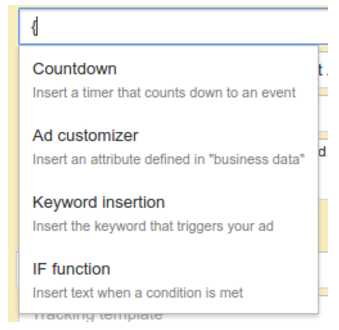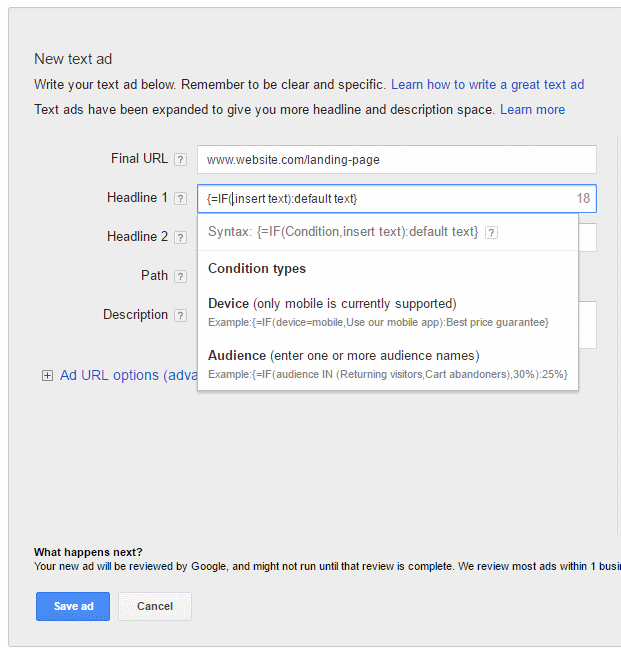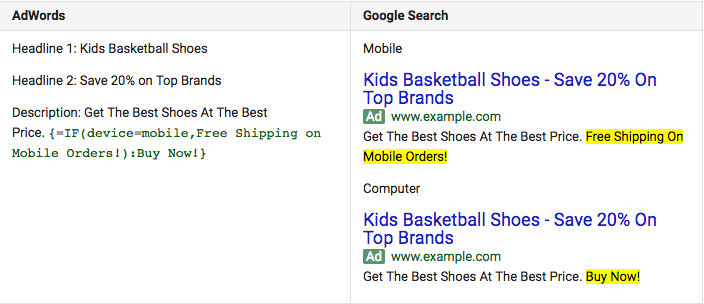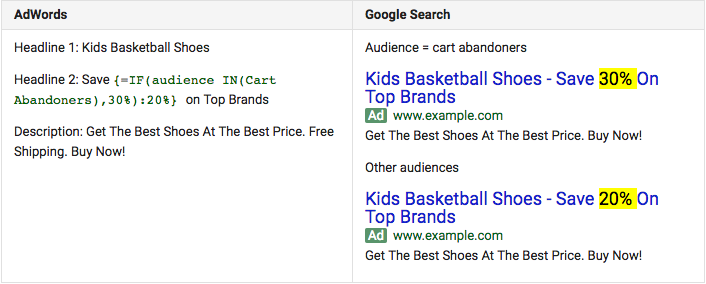In early December, Google announced that they would roll-out the new AdWords IF function in the coming months. The logic is what you’d expect. The result is dynamic ad copy that will read one way if a condition is met and another way if it is not met.
Don’t get IF confused with Dynamic ads though. PPC Marketers have had the ability to create dynamic text ads for a time now using the ad customizer feed-based feature. The IF function is condition-based and operates independently of a feed.
The Google AdWords blog says the “IF functions allow you to insert a specific message in your text ad when a condition is met, and a default text when it does not. This makes your ads tailored to each search and more relevant.” The concept is straightforward and gives PPC marketers more effective and personalized options for messaging consumers in the same campaign, but the current application needs a bit more explanation.
A Closer Look at IF
PPC Marketers may or may not have access to the IF function in their AdWords account at this point. To determine if your client accounts have access to IF yet, Google says “try editing one of your ads and adding a {. A drop-down should appear. If the option IF function is available, then the feature has been enabled for the account.”

Is it already enabled?!
Go ahead, go check now…we’ll wait.

If you do have IF enabled, you can now use custom messaging to target your ad copy based on certain conditions! Keep in mind however that not all variables are accessible to PPC-IF-enthusiasts. Currently the only campaign options available are device and audience.

IF Campaign: Devices
Launching campaigns with IF functions based on device allows marketers to write one ad for a desktop user and a different ad for a mobile user. Going back to the fundamentals of mobile-friendly, users who are getting information from a small-format screen have different needs and will react better to ads catering to the mobile format.
Google provides further context on exactly how PPC marketers can make use of the IF function based on device:

You can see in the example above that the IF function was set up to offer mobile users “Free Shipping On Mobile Orders” while the same ad shown to desktop users simply gives the classic “Buy Now” CTA.
Being able to adjust ad messaging for a mobile device user is particularly helpful for any business that derives high value from phone calls or location information. For example, marketers can now easily target mobile users looking for business hours, reviews or even directions while they’re out and about.
IF Campaign: Audiences
The IF function also allows PPC marketers to cater messaging to different audience lists in their account.
To make use of the IF function for audiences, marketers first have to have audience groups or lists defined. Audience groups completely depend on the individual needs and characteristics of a business, but commonly these groups could be built off of how recently users visited your website (recency data) or even users who abandoned their shopping cart, like in the example from Google below:

Using the Audience variable in the IF function, PPC marketers can strategically offer greater discounts. Rather than go broke offering blanket discounts to everyone, or organizing feed-based discounts, the IF function allows you to easily target cart abandoners only for example. Even more, a business could present a first-time-buyer-discount only to people who aren’t on a customer list already or mention free shipping on orders over $X to a list of cart abandons that were in excess of that amount or very close. Of course these are only a few examples and we’re all anxious to see how others use the IF function to get greater campaign results in the coming months.
The Future of the AdWords IF Function
There is no doubt that anyone not using any kind of dynamic PPC AdWords campaigns will have better results simply by applying the IF function. More personalized and relevant messaging always helps to increase conversions.
While the application of the IF function is limited for now, documentation suggests that down the road support is coming for time, gender and age. As advertisers and marketers we’re always interested in more effective ways to talk to our customer.
Image Credits
Feature Image: Unsplash/Pablo Garcia Saldana
All screenshots by Robert Brady. Taken April 2017.
Image 1: Screenshot from the Google Developer Blog
Image 2: Screenshot from personal AdWords account
Image 3: Screenshot from Google Support
Image 4: Screenshot from Google Support
Image 5: Screenshot from Google Support



